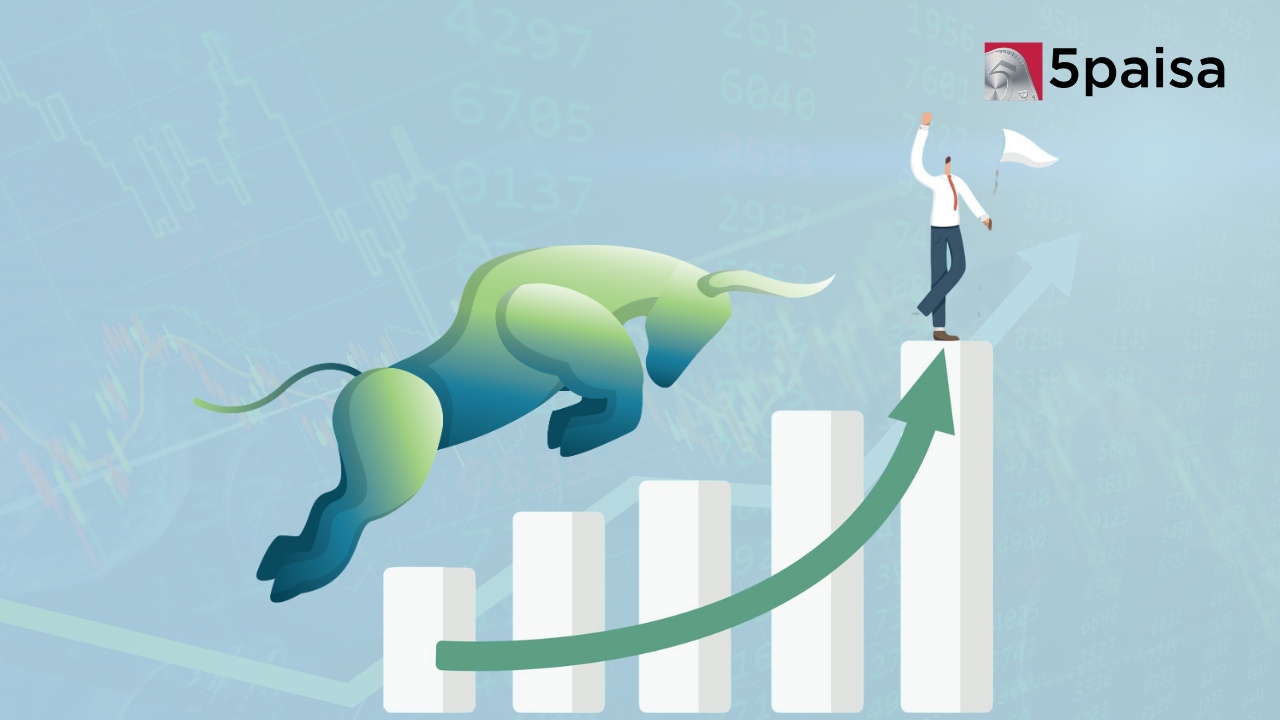Union Budget 2025: Markets Open on Saturday, February 1
Indian economic indicators showing mixed signals
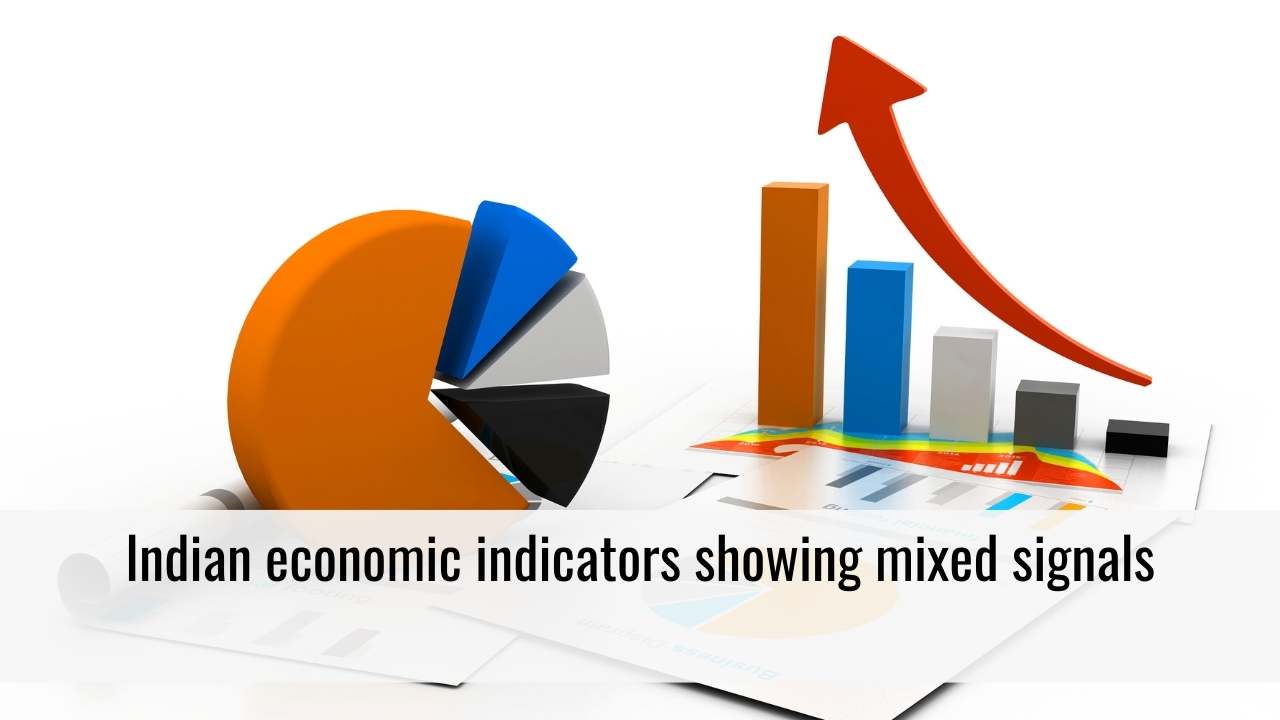
Last Updated: 13th December 2022 - 11:36 am
As Asia's third-largest economy, India was burdened by high inflation, rising borrowing costs, and worries about a global slowdown in July, business and consumption activity in the country showed conflicting signs of recovery.
According to a cross-section of high-frequency indicators gathered by Bloomberg News, demand for Indian goods and services decreased. However, because the gauge uses a three-month weighted average to smooth out volatility in the single-month readings, the needle on the dial measuring so-called animal spirits remained constant at 5 last month.
Here are some economic indicators by Bloomberg News which are providing mixed signals:
1. RBI increased interest rates by 140 bps:
The Reserve Bank of India has indicated that future tightening would be calibrated to ensure that there isn't a significant slowdown in the economy and sees price pressures moderating from its recent peak. This year, the Reserve Bank of India increased interest rates by a total of 140 basis points in three moves. The April-June quarter's gross domestic product data is expected to show double-digit growth, reflecting demand due to a wider reopening following the pandemic, according to an assessment of the economy due next week.
2. India’s services activity at its lowest level in July:
On the back of weaker sales growth and higher inflation, purchasing managers' surveys revealed that India's services activity in July fell to its lowest level in four months. Domestic demand for Indian services remained stable, but global demand deteriorated, counteracting growth in the manufacturing sector, which increased to its highest level in eight months.
3. S&P Global India Index decreased in July:
The S&P Global India Composite PMI Index decreased to 56.6 in July from 58.2 a month earlier due to a moderated business outlook in the services sector.
4. Export growth at its 17-month low:
The trade deficit increased to a new high of almost $30 billion as export growth slowed to a low of 17 months and a tax was imposed on fuel exports, which account for more than 15% of India's exports. Exports in India decreased to 36.27 USD Billion in July from 40.13 USD Billion in June of 2022.
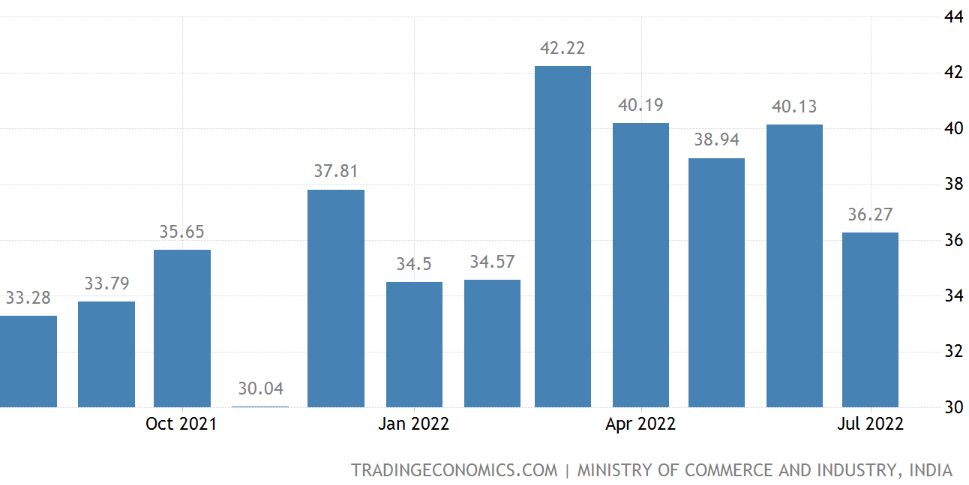
5. Imports to record a new high:
In the midst of general dollar strength, as bets increased that the Fed will continue to raise interest rates more quickly, the Indian rupee approached 80 per USD in late August, approaching record low levels touched last month. The outlook for inflation domestically, according to members of the Reserve Bank of India's monetary policy committee, was extremely uncertain. Even though the central bank has already increased borrowing costs three times to reduce inflationary pressures, the inflation rate in July remained above the RBI's target range of 2%-6% for a seventh consecutive month. India is also experiencing record trade deficits, which is further straining its balance of payments and the value of the rupee. Due to a weaker rupee, one of the worst performing Asian currencies over the past three months, imports remained close to record high levels. The increase in inbound shipments was primarily caused by crude, which makes up about one-third of India's imports, and coal, which has an 8% share.
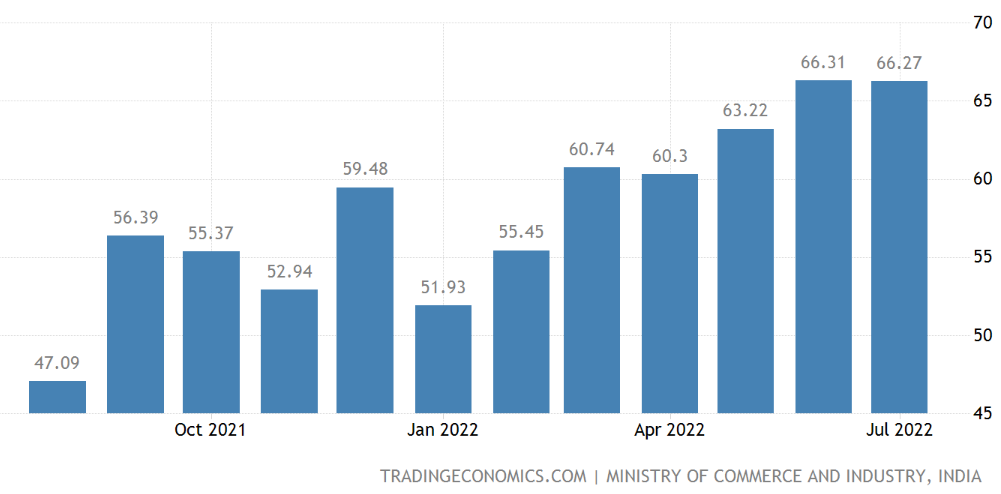
6. Increase in Passenger Vehicle sales:
Car Registrations in India increased to 192565 in July from 179880 in June of 2022. Sales of passenger vehicles increased for the second consecutive month thanks to a widespread recovery across all market segments, including two-wheelers. Automobile manufacturers warned that more expensive loans could reduce demand for new cars even though supply problems caused by a shortage of semiconductors are easing.
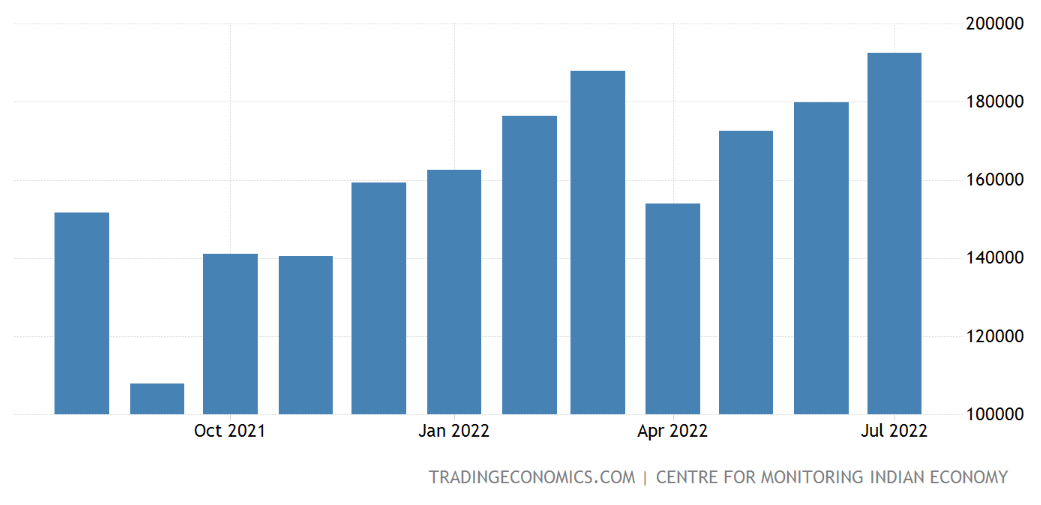
7. Liquidity in Banks at Surplus:
Bank credit increased despite higher interest rates, rising to 14.5% at the end of July, the highest level in more than three years. The banking system's liquidity remained in surplus.
8. Moderate signals in factory output and core sector:
Factory output and the core sector both showed signs of moderation in June as the start of the monsoon season slowed down coal production and electricity consumption. After reaching a one-year high in May, the Index of Industrial Production's annual growth rate slowed to 12.3%. Eight important infrastructure industries' growth decreased as well, falling to 12.8% from 19.3% the month before. Both data have a one-month delay in their publication.
- Flat ₹20 Brokerage
- Next-gen Trading
- Advance Charting
- Actionable Ideas
Trending on 5paisa
Indian Market Related Articles
Disclaimer: Investment in securities market are subject to market risks, read all the related documents carefully before investing. For detailed disclaimer please Click here.
 5paisa Research Team
5paisa Research Team
 5paisa Research Team
5paisa Research Team

